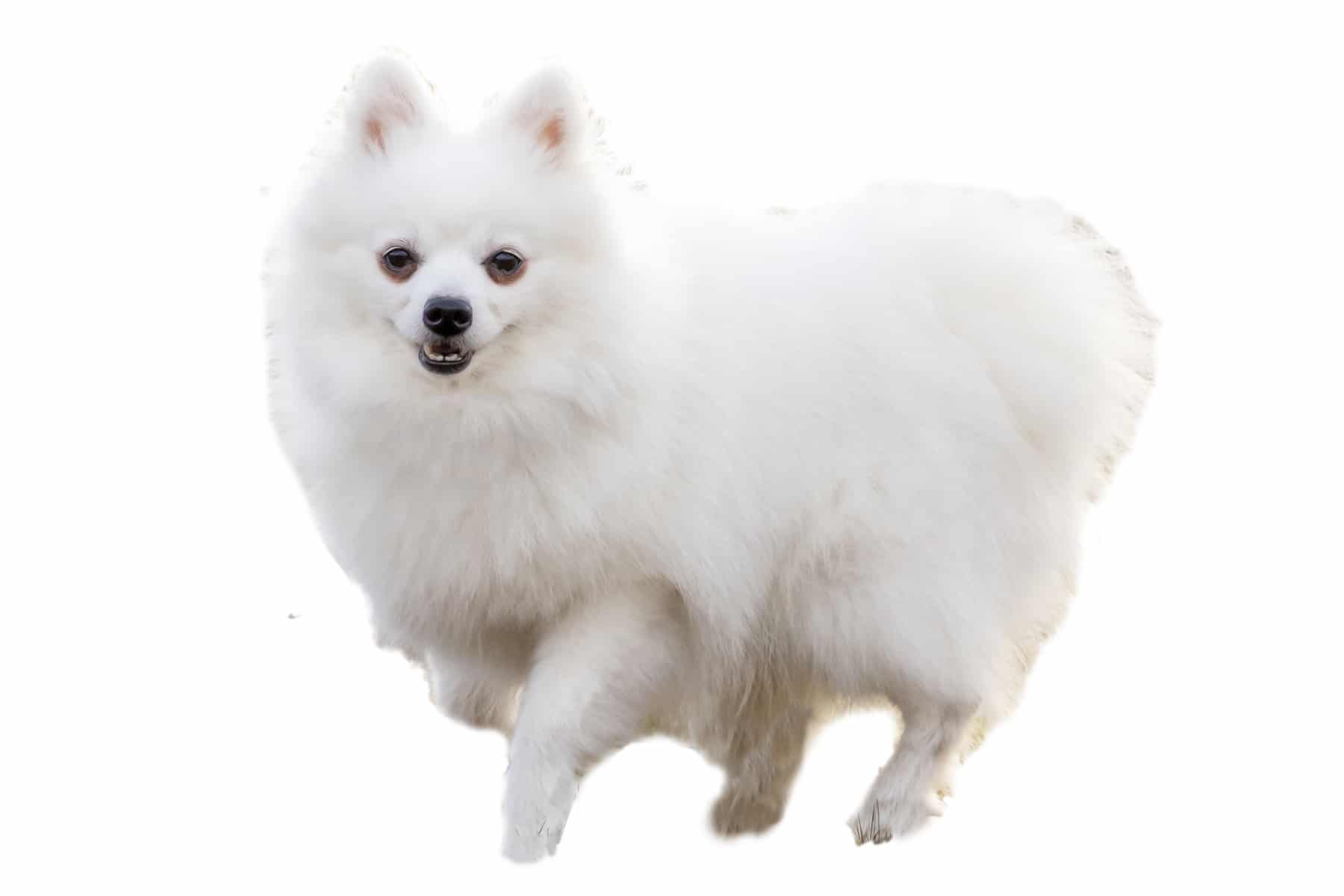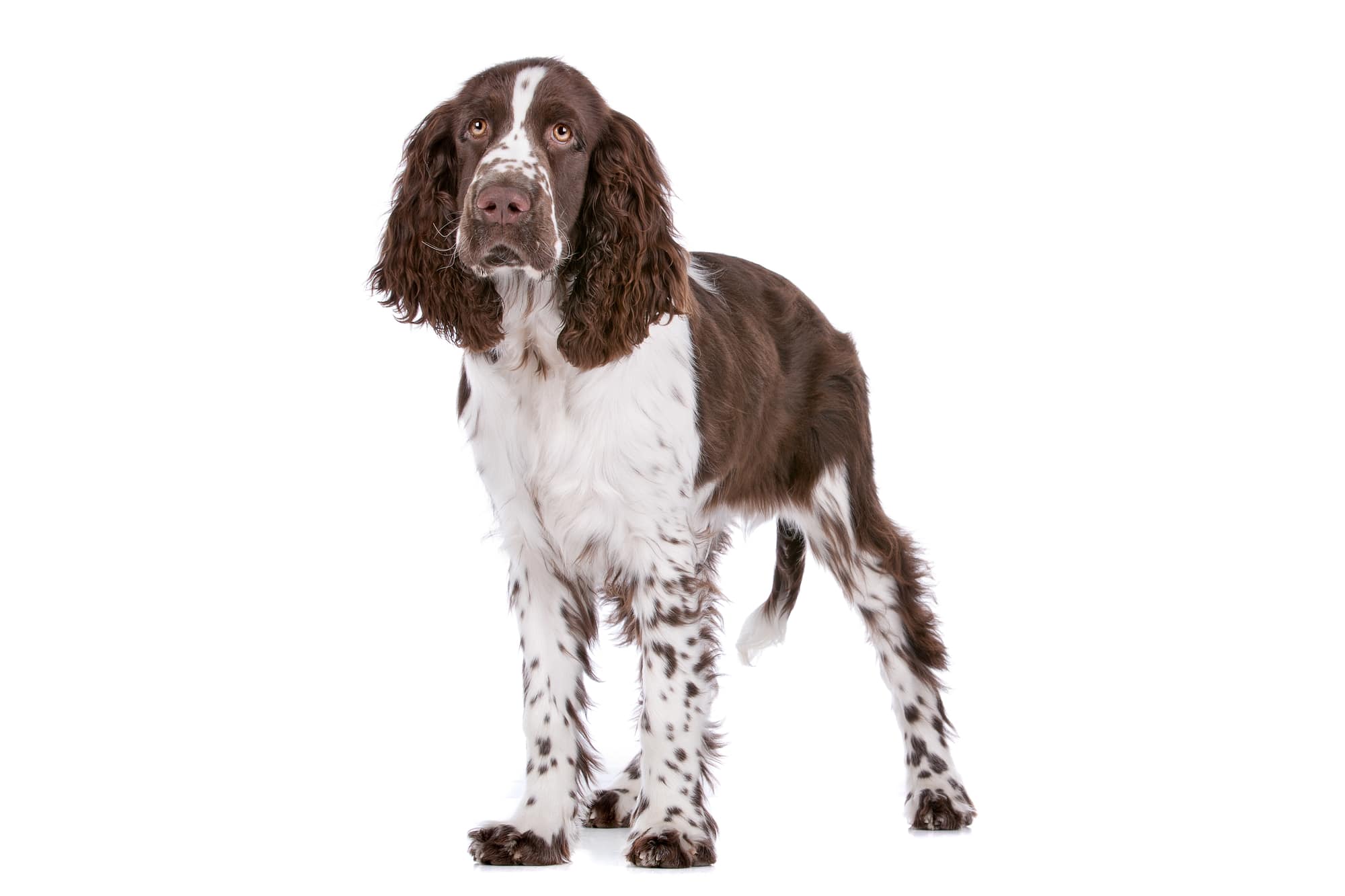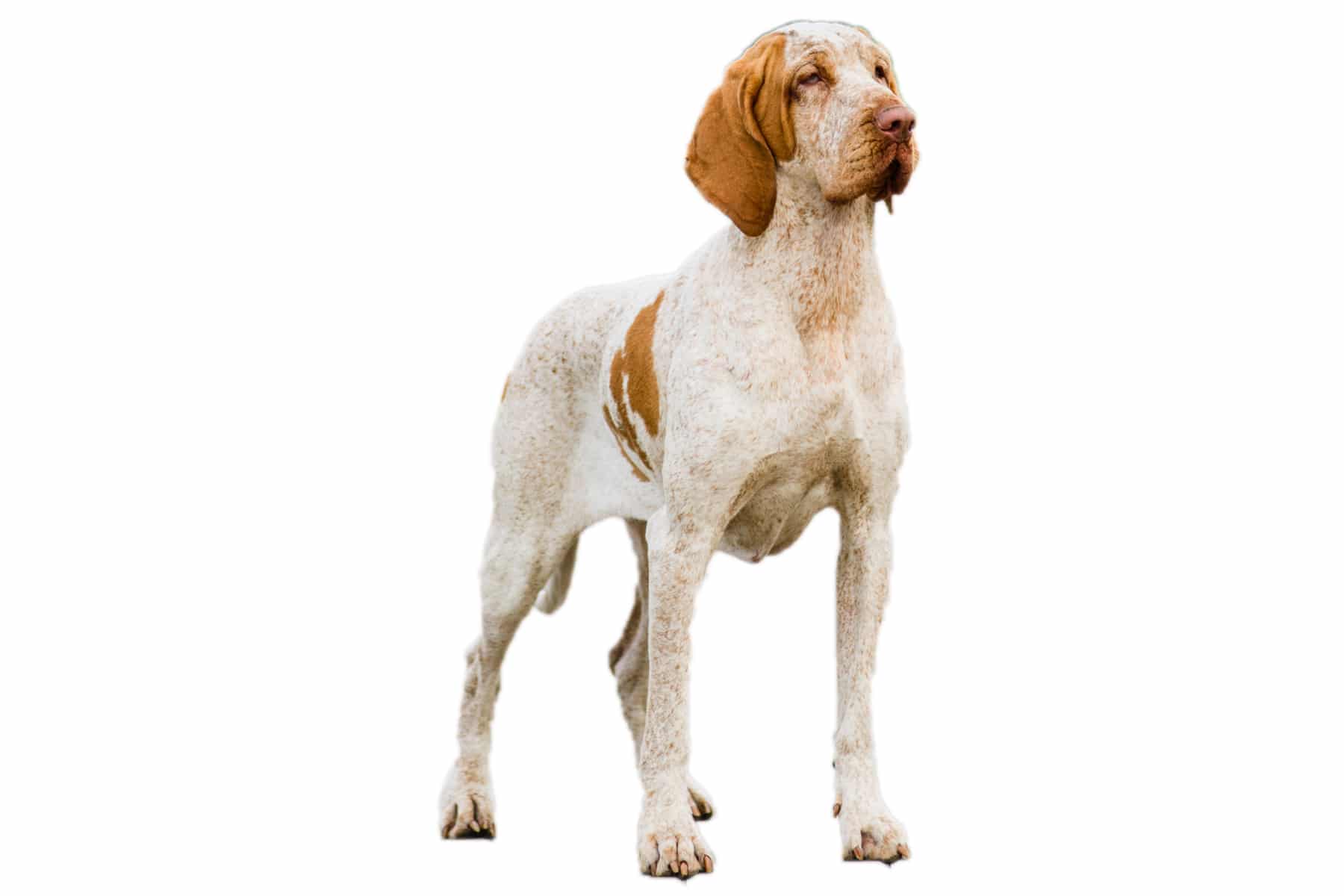Great Dane
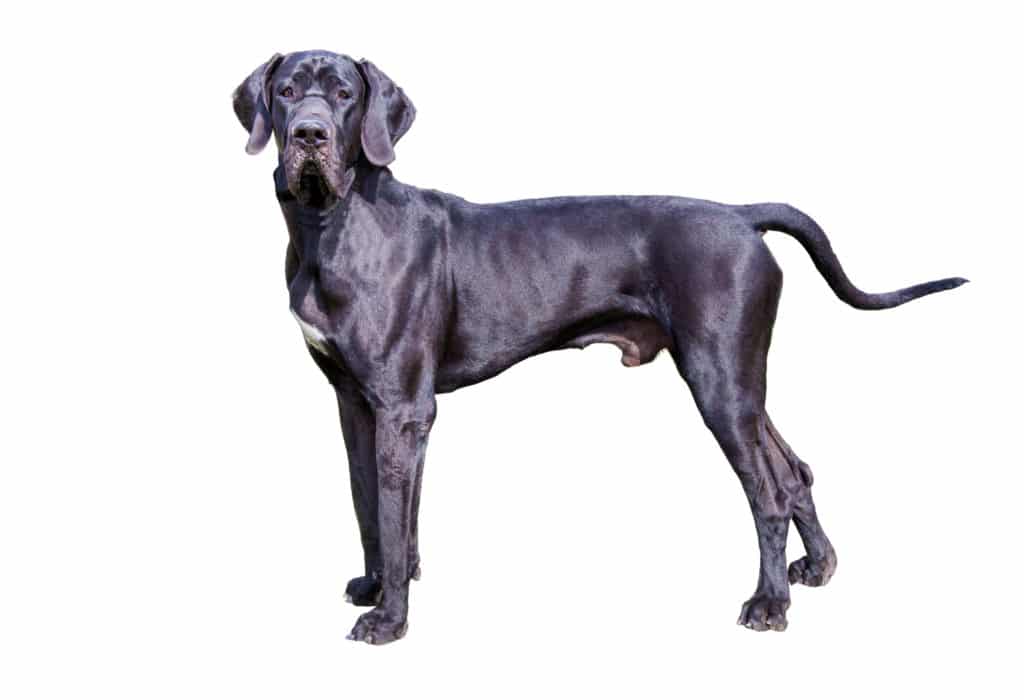
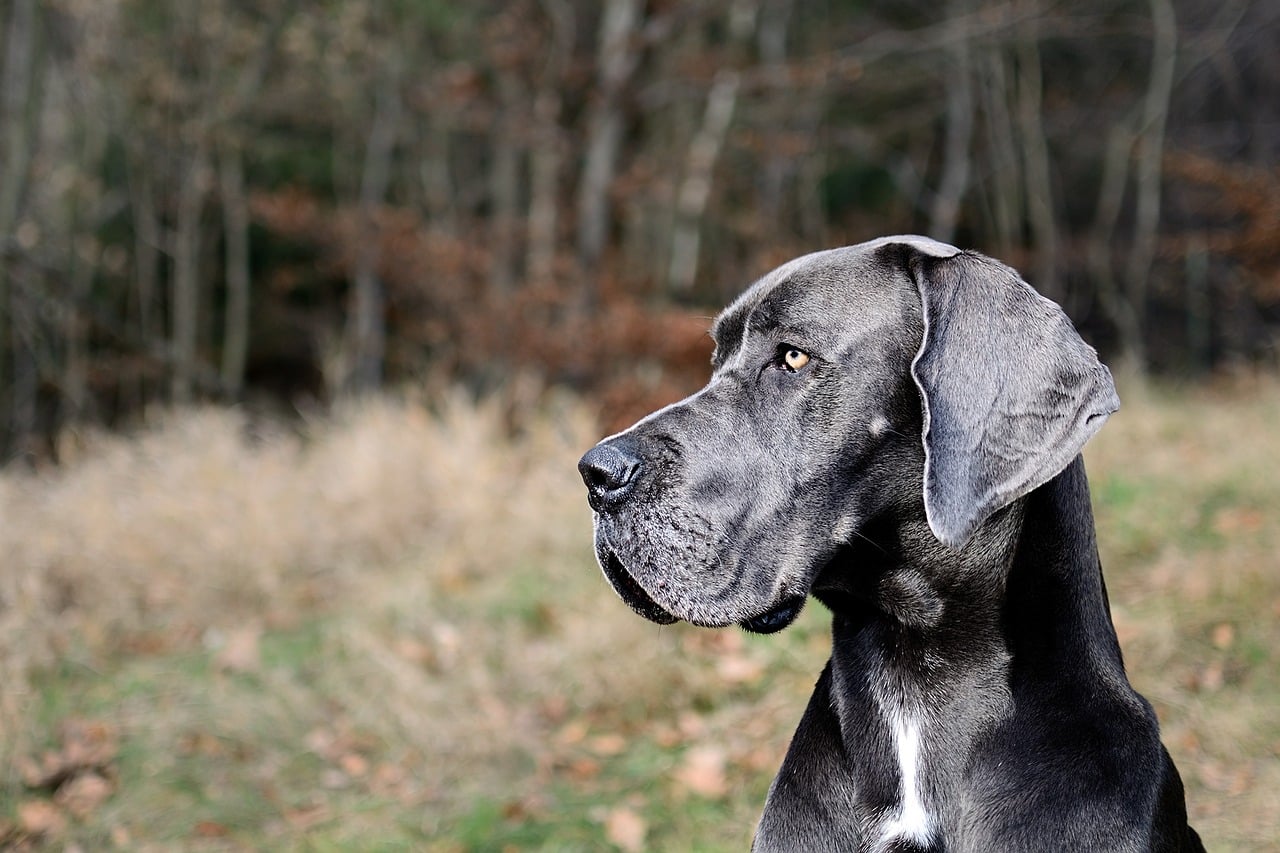
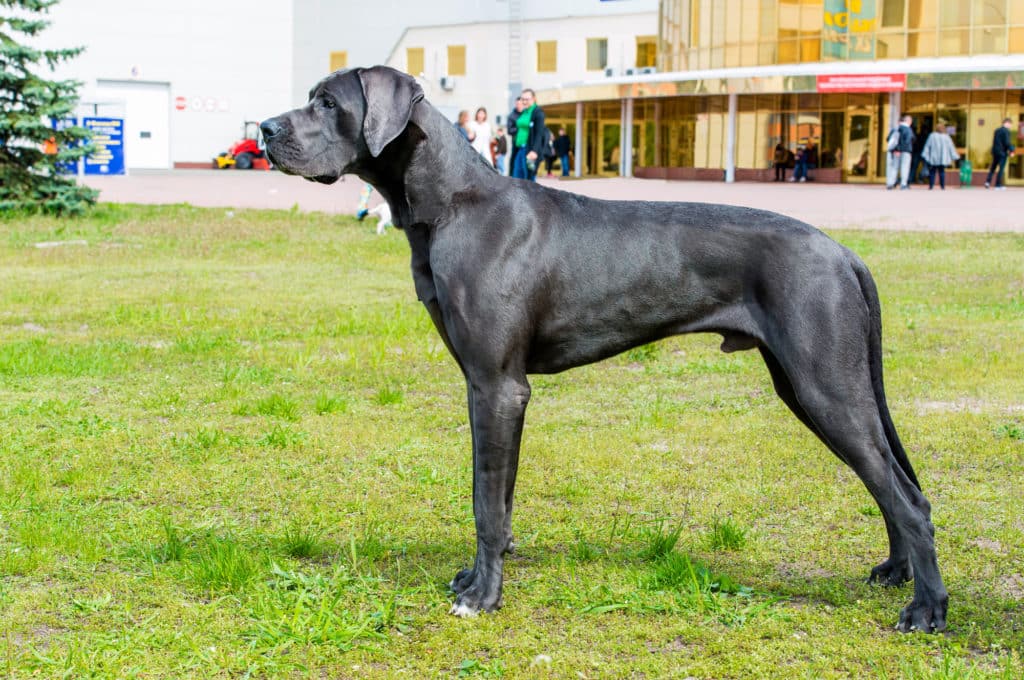
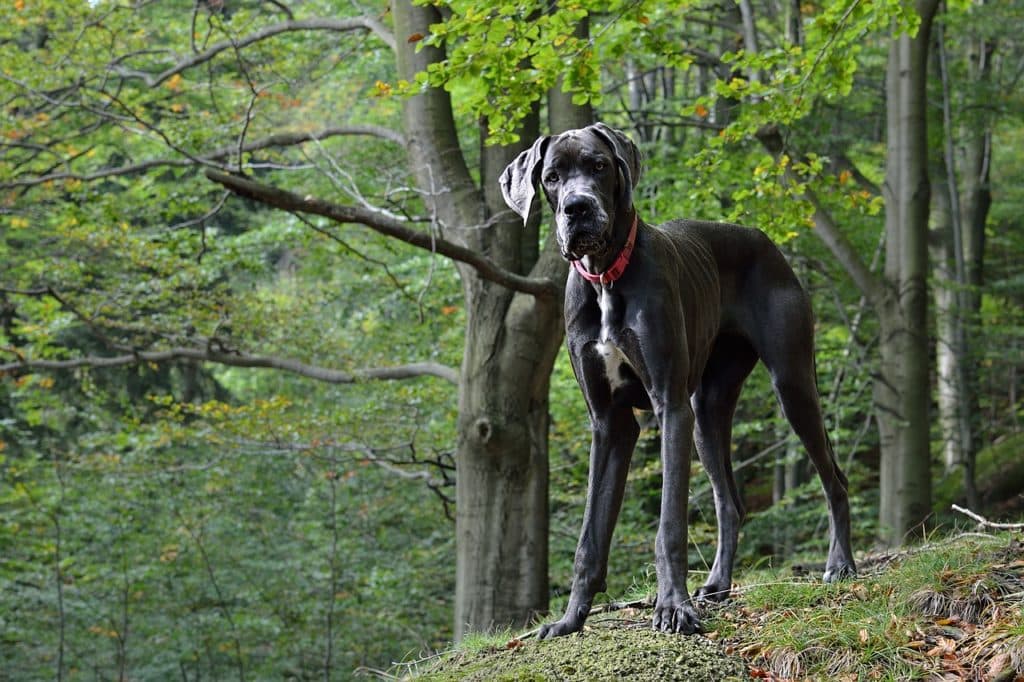
Temperament:
The Great Dane is one of the largest and most popular dog breeds in the world. This is mainly due to their majestic presence. Their overall appearance is imposing. The four-legged friends are very affectionate and develop a strong bond with their owner. They have a lovable and extremely friendly, good-natured nature. They are also particularly suitable as a family pet for families with children. Keeping a Great Dane is suitable for anyone who has plenty of space and love to give.
Characteristics
The Great Dane is a Group 2 breed recognized by the FCI. Visually, these animals are particularly striking due to their impressive body size. This can reach a considerable size of 80 to 90 cm on average. The distinctive head and strong build of the animals are also well-known characteristics of these popular four-legged friends.
Another typical feature are the high-set ears. The loyal dark eyes are also considered a real trademark of the dogs.
The coat of this popular dog breed is smooth, very short and close-fitting. There are basically three different colors. The golden-yellow shades and the black and white spotted coloration are very distinctive. The latter usually appears with evenly distributed spots. Black to dark blue/dark gray shades can also occur.
Another striking feature of this breed is its elegant, proud gait. This harmonizes perfectly with the appearance of the animal. It appears sublime and intimidating.
Great Danes have an extremely friendly and affectionate nature. They do not show any aggressive traits in their behavior. The animals often react shyly and cautiously to new, unfamiliar situations. Distrust and insecurity quickly set in. Great Danes are also generally very sensitive and often seek to be close to their owner.
Among dog lovers, these animals are often referred to as "big lap dogs". This is due to the enormous need to cuddle these giants.
Great Danes are generally very even-tempered animals. Complications with other dogs are therefore very rare.
Due to their imposing appearance, Great Danes are particularly suitable as guard dogs. Their appearance commands respect without appearing aggressive. These four-legged friends also develop a pronounced protective instinct. This is due to their close emotional bond with their owners.
The animals observe their surroundings very closely and can quickly recognize dangerous situations. However, they only do this to protect their owner. With a Great Dane, you are therefore safe from attacks.
Coat care:
Shedding:
Energy level:
Trainability:
Children suitable:
The right food
In general, Great Danes should be fed a balanced and healthy diet. It is important that the animals can absorb all the important nutrients and vitamins. In this way, deficiency symptoms can be avoided.
In general, attention should be paid to the composition of the food. Good, fresh feed does not harm the animals. Vegetables, meat and healthy cereals are a good approach here. However, sugary foods of all kinds should be avoided. These are harmful to dogs' health and should be avoided at all costs.
When dosing the feed, it is essential to take the animals' considerable physique into account. The dosage of the individual meals depends on various factors. These include size, weight, age of the animal, daily exercise requirements and state of health. All these points play a decisive role.
It is also important to note that Great Danes have a very slow metabolism. For this reason, the animals tend to be overweight more than other breeds. However, overweight should be avoided at all costs, especially to protect the joints.
The conformation of Great Danes makes them susceptible to stomach torsion. This disease can be very unpleasant for these faithful four-legged friends. It is associated with severe pain and is often even life-threatening. In most cases, such a condition can only be corrected surgically.
The correct dosage of food is therefore of the utmost importance. In addition, a rest period should be taken after each meal.
Health & Care
Despite their enormous size and heavy weight, the Great Dane is a relatively low-maintenance dog breed. Grooming is particularly easy. The short, smooth coat makes regular brushing or even trimming superfluous.
The animals should only be combed with a soft brush from time to time. In addition, Great Danes shed comparatively little hair. This has the positive side effect of keeping the house largely clean.
A soft, well-padded resting place as a retreat is recommended. It relieves pressure on the bones during rest periods.
It is also important that the animals get enough exercise and exercise. Great Danes generally have a pronounced urge to move. This cannot be well exercised indoors or in the apartment. Daily long walks are therefore essential.
It should also be noted that the dogs are completely unsuitable for keeping in a kennel. Due to their size alone, the animals need sufficient space. This is necessary for free development and growth.
Suitable accessories
To be able to offer your four-legged friend a suitable living space, you need space. Cramped rented apartments are not suitable for such an animal. Great Danes should also have to climb as few stairs as possible. A private garden or a large plot of land to run free are particularly suitable.
It should also be noted that Great Danes are very strong. You need a lot of strength and assertiveness to be able to handle such a dog in a controlled manner.
Great Danes are very curious. It makes sense to give them a task to keep them busy. These animals are often used as guard or watchdogs. It is a good idea to let the animal run free for a few hours a day on a fenced-in property. This allows the four-legged friends to get enough exercise. At the same time, they are given the task of guarding the property.
Great Danes love to play. Dog toys of all kinds that are suitable for large dog breeds are suitable for this. Small parts and tiny toys should be kept away from the animals at all costs. Otherwise there is a risk of them swallowing them. Ball and fetch games are particularly popular. They can run around a lot and let off steam.
Great Danes are very sociable and friendly with other dogs. It is therefore helpful to seek regular contact with other dogs. The animals can really let off steam in a large meadow, for example. The dog owners can also use this opportunity to socialize a little.
At such meetings, however, care should be taken to ensure that Great Danes get together with dogs that are also medium to large breeds. When romping with small dog breeds, the risk of injury for the four-legged friends is high.
Your Great Dane needs the following basic equipment: a robust collar with lead, a well-padded dog mat as a place to retreat to, food and water bowl, tick tweezers, claw clippers, brush, transport box or transport device in the trunk.
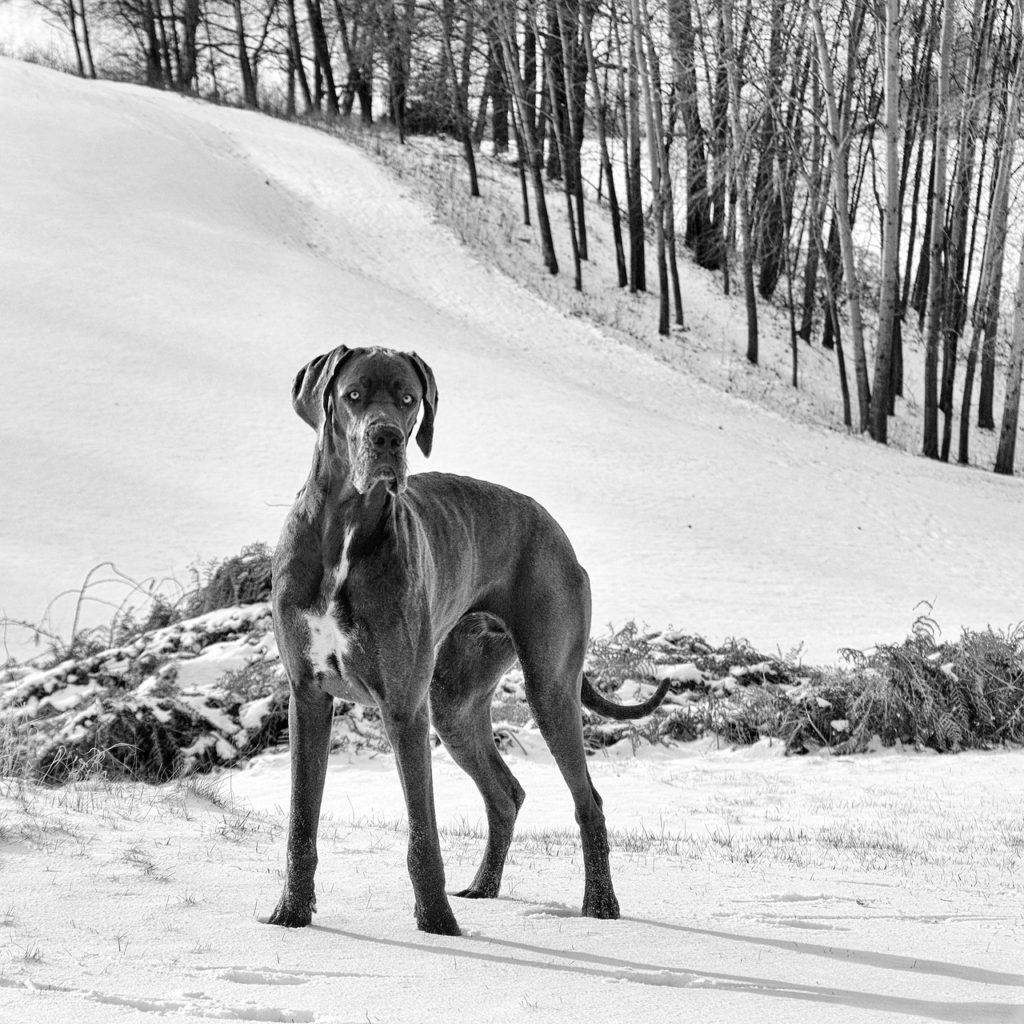
Origin & History
The history of the Great Dane goes back to the 16th century. The breed is thought to have originated in England. It is said to have originated there as a cross between Mastiffs and Irish Wolfhounds.
At that time, Great Danes were kept as fear- and respect-inspiring dogs. They were supposed to keep uninvited guests away and protect the estate and its inhabitants. Owning such animals also stood for prosperity.
The Great Dane Club was founded in Germany in 1888. It is the oldest breed club in Germany. It set itself the task of perfecting the animals. It was in this context that the breed was given its current name.
